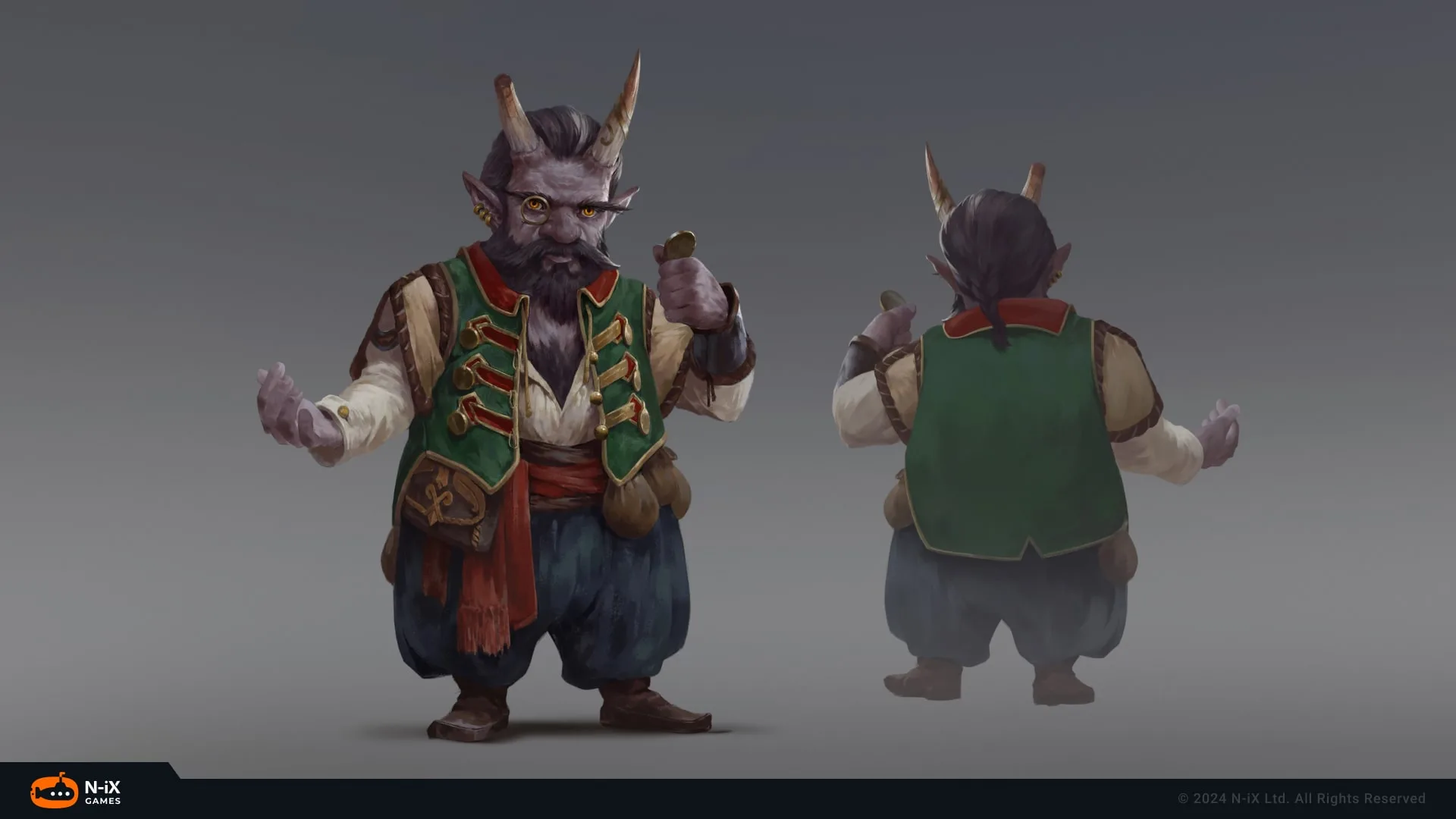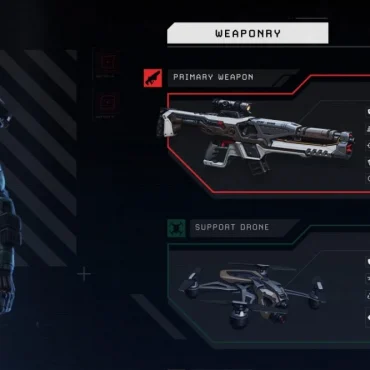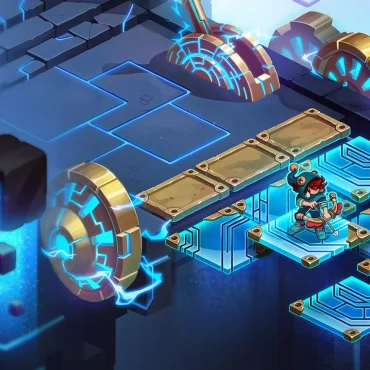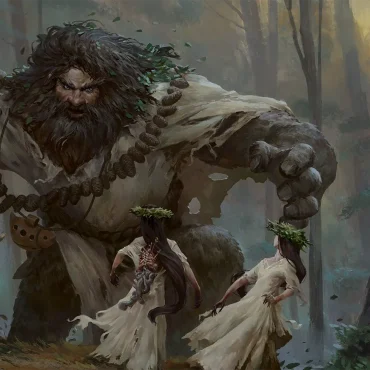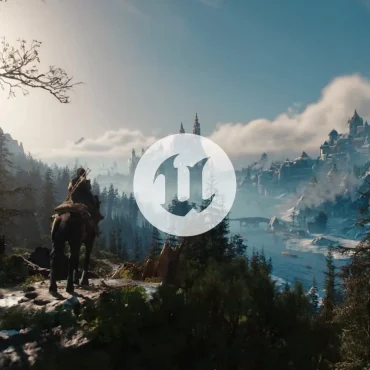Game concept art is crucial for establishing the visual direction of a project before full production begins. It helps developers visualize characters, environments, and objects, ensuring that every design decision aligns with the game’s tone and mechanics. Whether you are a beginner or an experienced artist, developing a deep understanding of concept art and its process is key to creating engaging game worlds. This article explores the essential aspects of video game concept art, including its purpose, different styles, and the workflow behind bringing ideas to life.
Defining concept art for video games
Concept art is the process of creating early visual elements for a game, including characters, environments, props, vehicles, etc. These initial designs serve as blueprints, helping developers determine the artistic style and maintain consistency throughout production. Video game concept art is not about creating polished illustrations but rather about exploring ideas, problem-solving, and efficiently communicating concepts to the team.
By focusing on composition, lighting, and form, concept artists create sketches and digital paintings that guide 3D modelers, animators, and designers. Without concept art, game development risks inconsistencies, wasted time, and a lack of cohesive visual identity.
The role of concept artists
Concept artists are responsible for designing and refining the visual elements of a game. Their work helps game designers bring ideas to life while ensuring that every character, object, and location fits within the game’s world. They collaborate with animators, 3D modelers, and developers to turn initial sketches into functional assets.
Responsibilities of concept artists
- Creating early sketches and thumbnails to explore multiple design possibilities
- Refining and finalizing chosen designs with detailed rendering
- Ensuring that designs align with the game’s story, mechanics, and artistic style
- Collaborating with other departments to maintain consistency
- Incorporating feedback to improve and adapt designs
Successful concept artists must have strong drawing skills, knowledge of digital tools like Photoshop and Blender, and the ability to think creatively. Their role is about more than just making attractive images – it’s about solving visual challenges and shaping the world of the game.
Key video game concept art styles
Concept art can take many forms depending on the game’s setting, tone, and artistic direction. Below are three primary styles used in video game development.
Realistic concept art
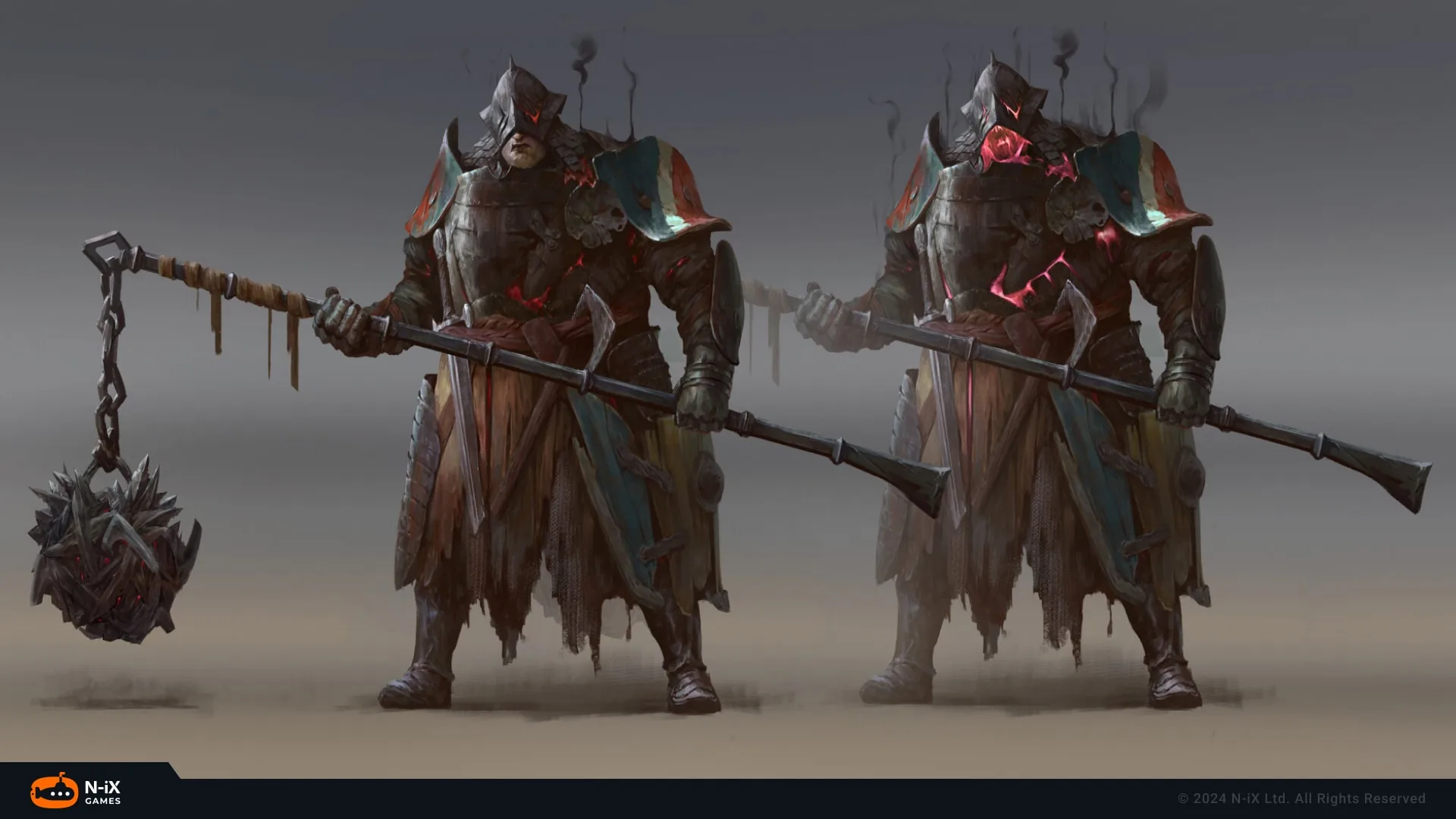
Realistic concept art focuses on accuracy and detail, replicating real-world elements as closely as possible. This style is popular in AAA games, historical settings, and military simulations. Artists working in realism pay close attention to lighting, materials, and anatomy to create believable characters and environments. This style demands a deep understanding of physics, perspective, and shading techniques. Notable examples of games with highly detailed realistic concept art include The Last of Us Part II, Red Dead Redemption 2, and Call of Duty: Modern Warfare.
Stylized concept art
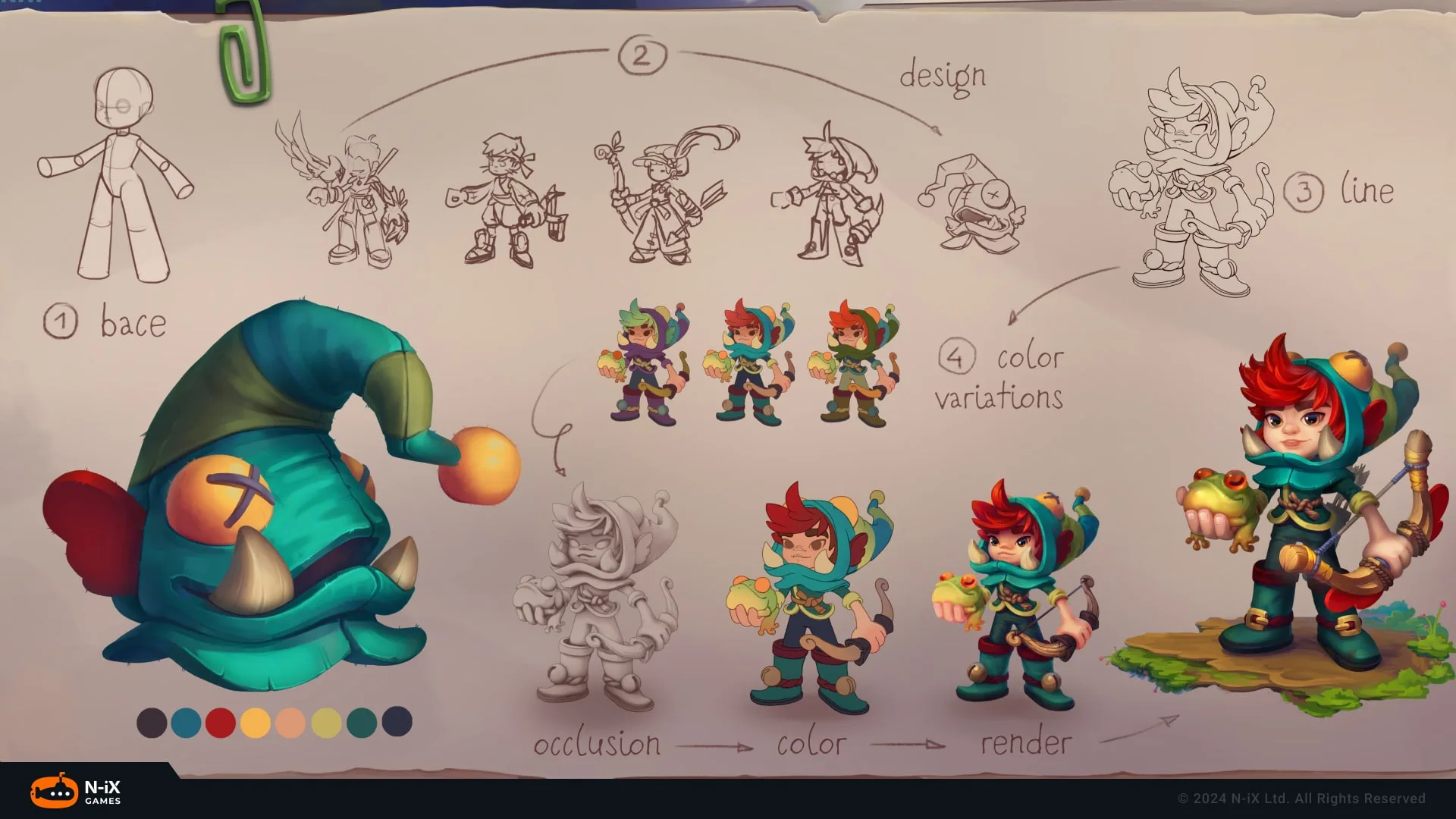
Stylized concept art emphasizes exaggerated forms, bold colors, and imaginative designs. Unlike realism, this style distorts proportions and textures to create a distinctive look. It is commonly found in games like The Legend of Zelda: Breath of the Wild and Overwatch, where characters and environments have a handcrafted, artistic appeal. This approach allows artists to enhance personality and storytelling through visual design.
Abstract concept art
Abstract concept art relies on unique shapes and unexpected compositions to create intriguing visuals. This style is common in experimental and indie games that seek to push creative boundaries. Artists use colors, textures, and minimal details to evoke emotions rather than depict literal objects. Games that use abstract art often focus on atmosphere and player interpretation. Titles such as Journey, Inside, and Gris are excellent examples of games that employ abstract art to create immersive and emotional experiences.
Different types of concept art in games
Each element of a video game requires a different approach to concept art. Artists specialize in various categories to ensure a cohesive visual identity.
Character concept art
Character concept art defines the appearance, personality, and role of game characters. Artists explore different outfits, body types, facial expressions, and postures to match the game’s setting. Strong character design should visually communicate a character’s background, emotions, motivations, and distinct traits. A well-designed character should not only be appealing but also serve a functional purpose in gameplay, enhancing the player’s connection to the narrative and their role within the game world.
Environment concept art
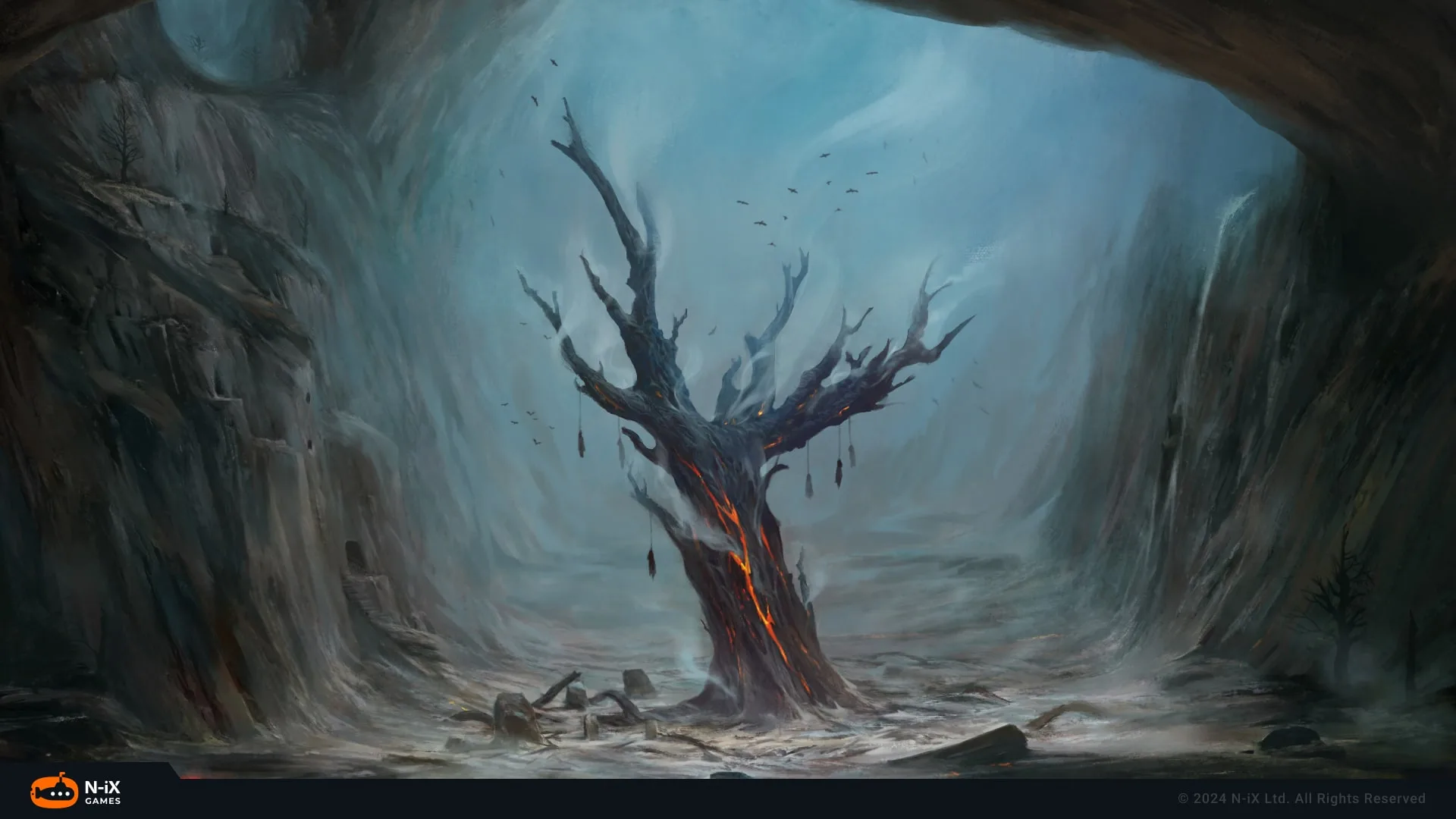
Environment concept art shapes the game world’s locations, setting the mood, atmosphere, and scale. Whether designing sprawling cities, dense forests, or alien landscapes, artists consider lighting, weather, time of day, and structural details. A well-crafted environment not only immerses players but also serves as a storytelling tool, guiding the player’s experience and evoking emotions that enhance engagement with the game world. The best environment concept art blends functionality with aesthetics, ensuring smooth navigation while maintaining visual interest.
Prop concept art
Props include objects such as tools, weapons, furniture, interactive items, and decorative elements. While they may seem minor, props play an essential role in reinforcing the world’s authenticity and atmosphere. Concept artists design props to fit seamlessly into the game’s universe, ensuring they appear functional, culturally relevant, and visually engaging. Well-designed props help establish a sense of realism and provide deeper insight into the game world, enriching player immersion and interaction.
Equipment & vehicle concept art
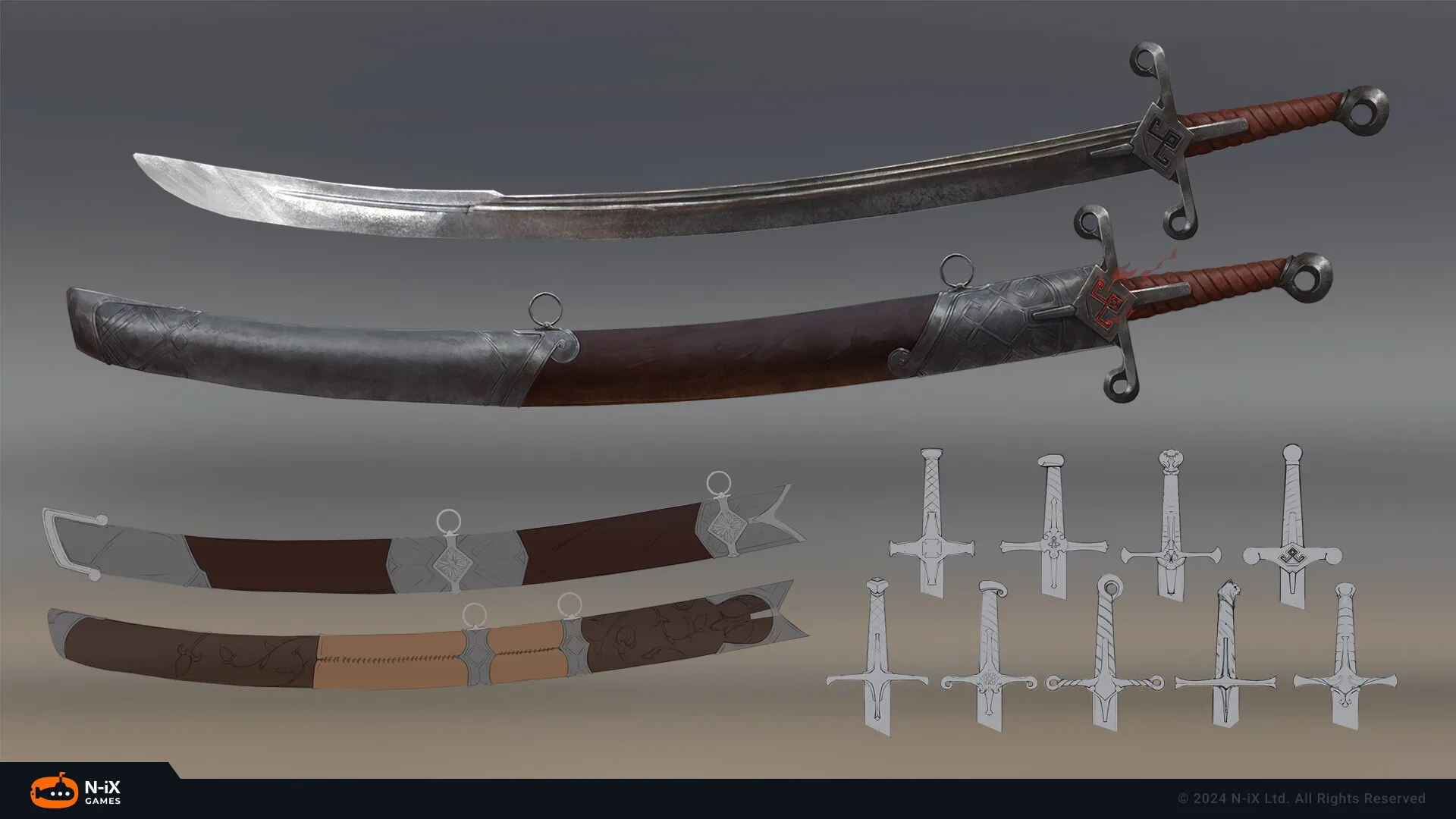
Vehicles and equipment play essential roles in many games, from futuristic spaceships to medieval armor and advanced tactical gear. Video game concept artists focus on designing these elements with a balance of functionality, practicality, and aesthetics. A well-designed weapon or vehicle should not only fit seamlessly into the world but also serve specific gameplay mechanics, offering strategic advantages to players. Whether it’s a heavily armored war machine or an intricate piece of wearable gear, detailed concept work ensures these assets feel authentic, immersive, and visually striking.
The art process in concept art companies
Art companies follow a structured process when delivering concept art services for games. Each stage refines the initial ideas until they are ready for full production.
Gathering references
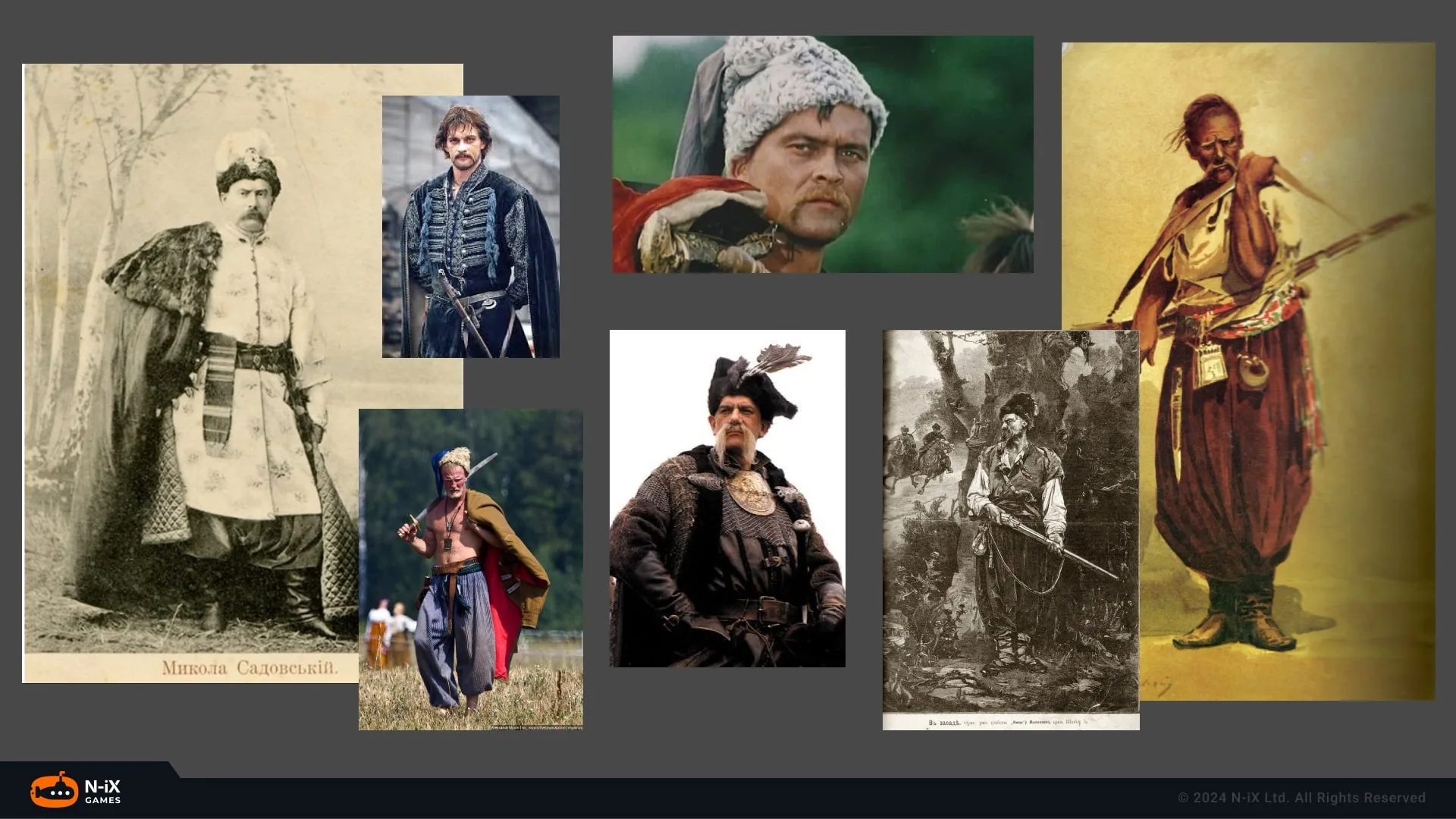
Before sketching, artists engage in extensive research and collect references to define the game’s visual direction. This includes studying real-world photographs, analyzing historical influences, and drawing inspiration from various artistic styles. Reference gathering is crucial for ensuring that designs remain consistent, believable, and authentic. By compiling mood boards, examining textures, and understanding architectural and cultural elements, artists create a strong foundation for their work. Without proper research, concept designs can feel generic or disconnected from the intended world.
AI-assisted ideation (optional)
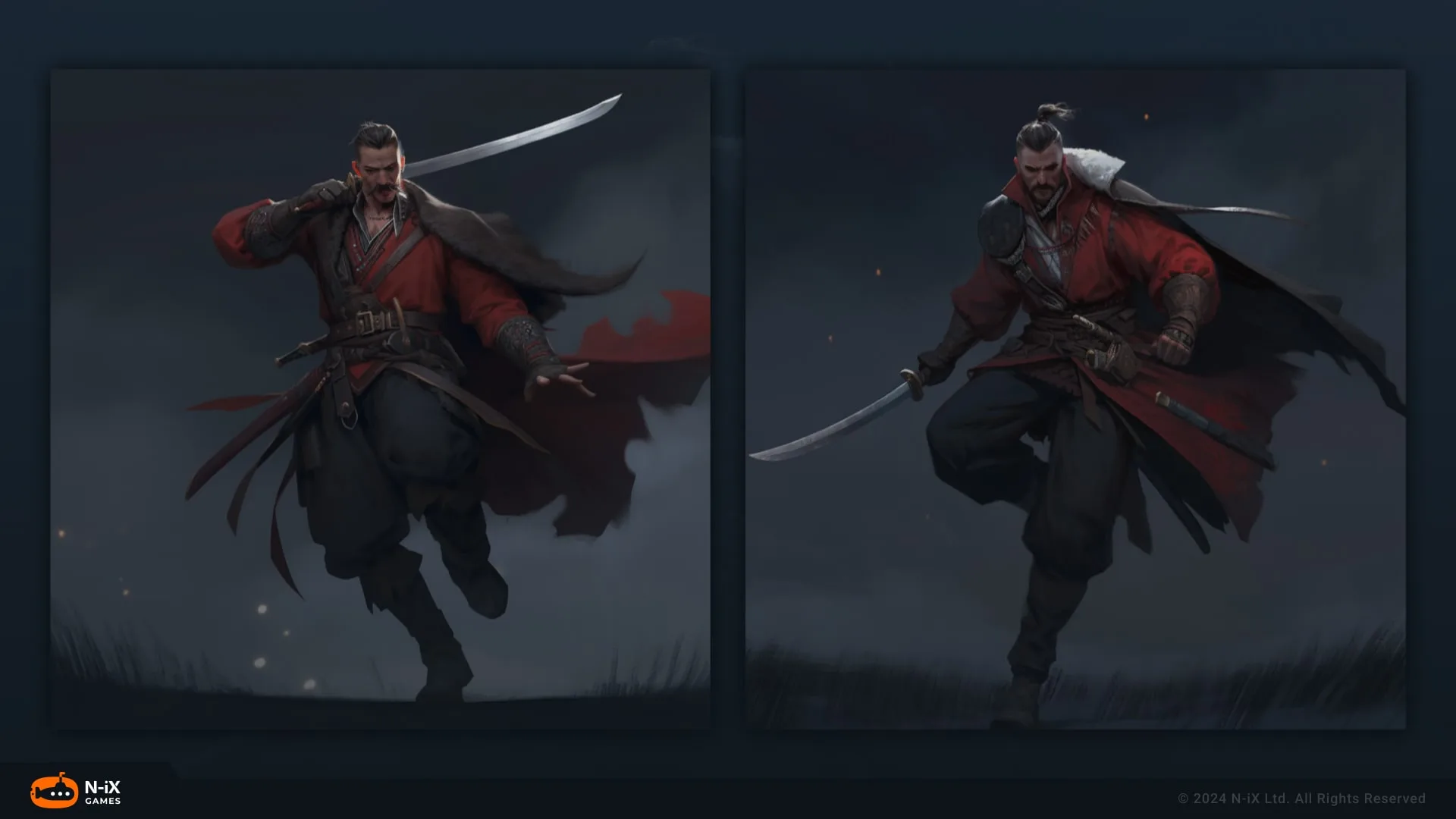
Some studios and artists use AI tools like Midjourney and Stable Diffusion to generate early ideas. While AI can provide interesting visual starting points, human artists refine and adapt these images to fit the project’s needs. AI is a tool for exploration rather than a replacement for artistic skill.
Sketching and collage
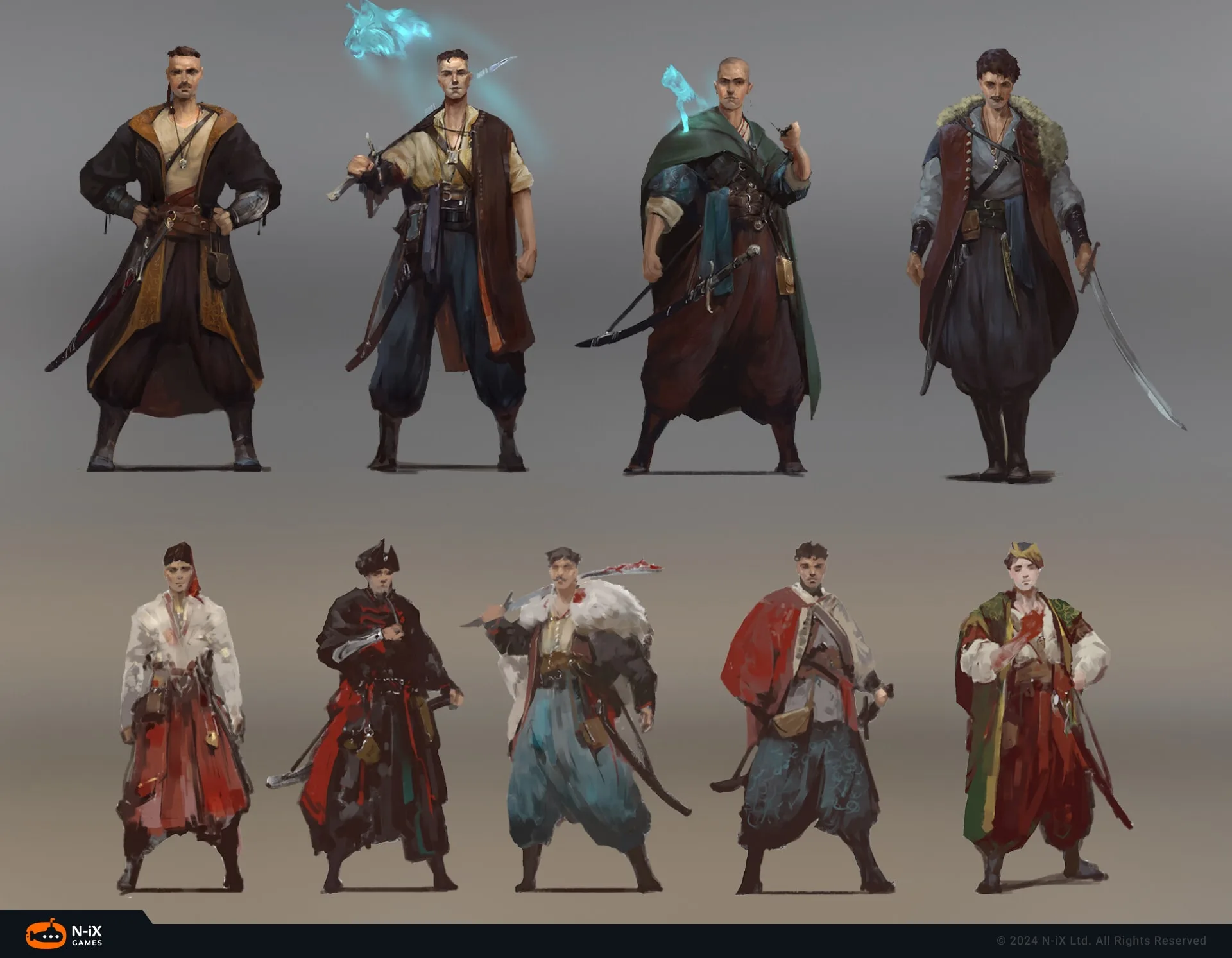
Artists begin with quick sketches and collages to explore different compositions and themes. They produce numerous rough sketches to iterate rapidly, testing different visual ideas and compositions before committing to a final design. These initial drafts serve as an essential exploratory phase, allowing artists to refine their approach and select the most compelling visual direction. By experimenting with different silhouettes, poses, and perspectives, they ensure that the final design is both unique and functional within the game world. Collages, combining various textures and visual elements, can also help generate creative ideas by juxtaposing unexpected elements together. This process helps artists develop a well-rounded visual concept before moving on to more refined renderings.
Finalizing the concept art
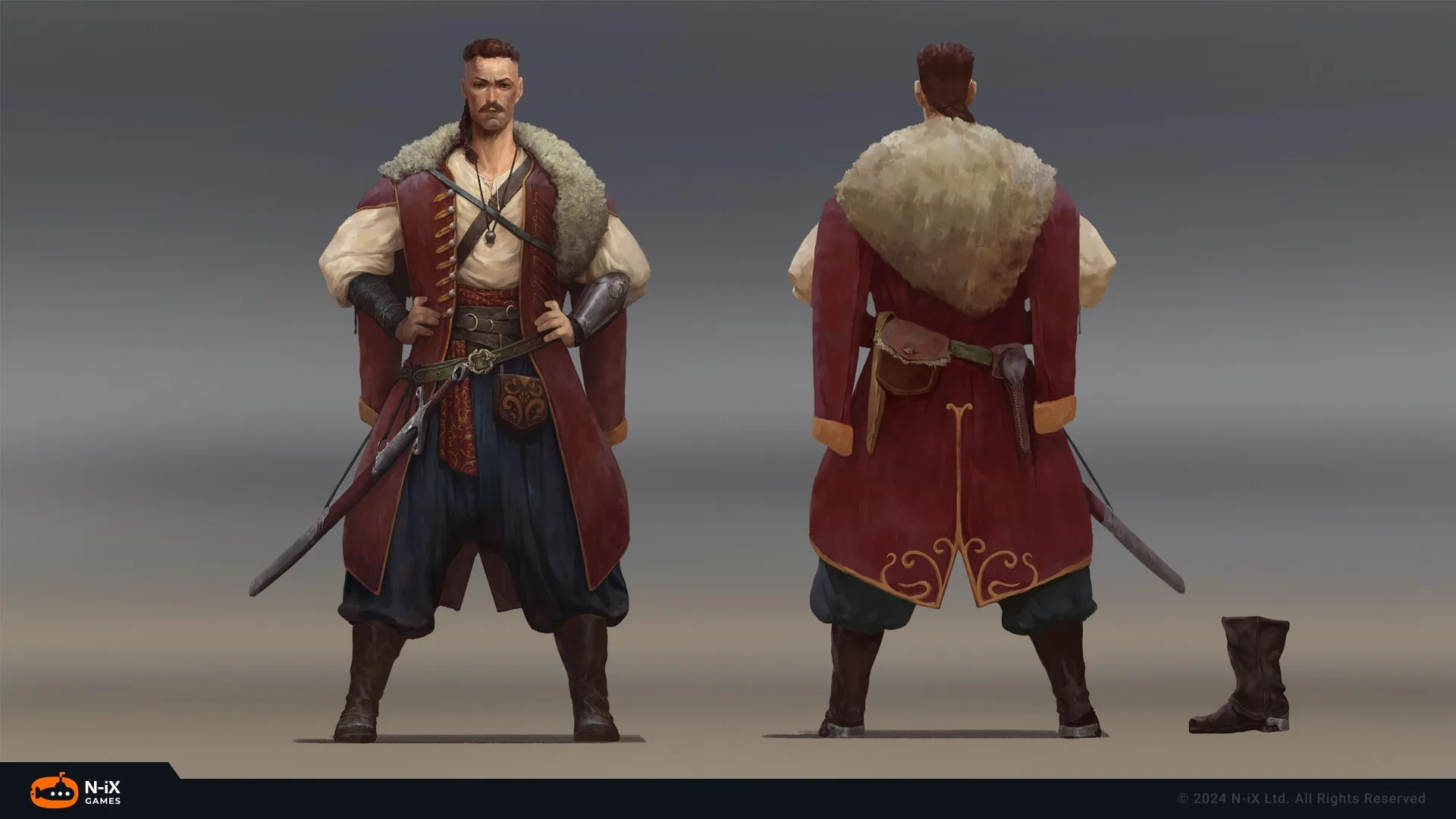
Once an idea is approved, the artist refines it with detailed rendering, carefully applied colors, and textures. This phase enhances the depth and realism of the concept, making every element align with the game’s visual style. Artists pay close attention to material properties, lighting effects, and environmental interactions, ensuring that the concept translates seamlessly into 3D models. The final concept art serves as an essential guide for 3D artists, helping them accurately reproduce the design while maintaining its intended artistic vision. This step also provides crucial visual clarity for animators and level designers, ensuring that the design integrates well into the game world.
Avoiding common pitfalls in concept art
Concept art shapes the foundation of a game’s visuals, but artists often encounter challenges that affect quality, consistency, and workflow efficiency. Being aware of these mistakes can help artists refine their skills and produce artwork that better serves the development process. Below are some of the most common pitfalls and how to avoid them.
Inadequate research and poor reference gathering
A strong foundation in research is critical for concept artists. Without proper references, designs can feel uninspired, generic, or unrealistic. Artists should study real-world materials, analyze different artistic styles, and compile reference boards to ensure their work has authenticity and depth. Proper research also speeds up decision-making and reduces unnecessary revisions.
Dismissing constructive feedback and lack of collaboration
Video game concept art is rarely a solo endeavor. Ignoring feedback from art directors, designers, or 3D modelers can result in artwork that does not align with the overall game vision. Regular reviews and discussions help refine concepts, ensuring they serve the needs of the game rather than just personal artistic expression. Openness to critique is a vital skill for any concept artist.
Failing to maintain artistic consistency and direction
A game’s visual identity relies on a cohesive style. Deviating from the established aesthetic can create jarring inconsistencies in the game world. Artists must align with style guides and remain conscious of the overarching vision to ensure the smooth integration of their designs into the final product. Consistency improves immersion and strengthens the game’s identity.
Excessive detailing before solidifying core design principles
Jumping straight into highly detailed rendering before finalizing composition and form can be counterproductive. Artists should prioritize strong silhouettes, clear shapes, and well-thought-out compositions before refining surface details. This approach ensures that designs are both functional and visually compelling from the outset.
Weak composition and neglecting visual flow
A well-structured composition is essential for clear communication. Poorly composed designs may confuse the viewer or lack impact. Artists should use visual hierarchy, contrast, and balance to guide the player’s attention to key elements. Thoughtful use of lighting and framing can further enhance the readability of a design.
Neglecting the ideation and iteration process
Skipping the exploratory stage of thumbnailing and multiple iterations can lead to weak or underdeveloped designs. Quick sketches and variations allow artists to experiment and refine ideas before committing to a final version. Iteration is key to discovering the most effective design solutions and avoiding unnecessary rework later in the pipeline.
The impact of concept art services on game development
Experienced video game concept art companies offer more than just visual assets; they help streamline the entire production pipeline, ensuring smoother collaboration between artists, designers, and developers. By outsourcing concept art, studios can allocate more resources to core gameplay mechanics while maintaining a consistent visual style. Professional teams bring industry knowledge, technical expertise, and scalability, adapting to project needs at different development stages. From early ideation to final production, concept art services provide structured workflows that reduce iterations, enhance efficiency, and maintain creative direction. A well-integrated concept art pipeline helps prevent bottlenecks, ensuring high-quality visuals without compromising deadlines or budget constraints.
Concept art services at N-iX Games
N-iX Games brings years of experience in delivering high-quality concept art for video games, spanning both 2D and 3D art production. With over a decade in the industry, we have contributed to renowned IPs like Crusader Kings, Stellaris, and World of Warcraft. Our art production services include character design, environment art, prop and vehicle modeling, animation, and VFX, ensuring consistency and quality throughout production. By offering tailored solutions, we help studios refine their artistic vision and streamline their development process. If you need expert assistance in game art production, concept art company is ready to support your project.
Final thoughts
Concept art is the foundation of game visuals, guiding everything from character designs to environments. By mastering different styles, avoiding common mistakes, and following a structured workflow, artists can create compelling and immersive game worlds. Whether designing props, creatures, or full landscapes, concept art is essential in shaping the identity of a game.

